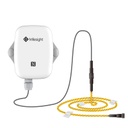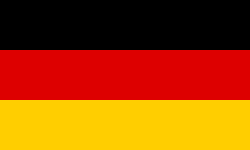Milesight EM300-ZLD LoRaWAN Leakage Sensor with Rope (temperature, humidity)
SKU :
MIL-EM300-ZLDexcl. 19.0% VAT plus Shipping costs
| Equipment | |
|---|---|
| sensor | Leakage, Temperature, Humidity |
| Communication | |
| frequency | EU868 |
| Power supply | |
| power supply | battery, included, replaceable |
| battery details | ER18505, Lithium-Thionylchlorid, nicht aufladbar |
| number of batteries | 1 |
| Certifications | |
| enclosure protection class | IP67 |
The EM300-ZLD is a compact sensor designed to detect the presence of water or other liquids over a large area. When a leak is detected, it transmits an alarm using LoRaWAN® technology. It also monitors temperature and humidity.
This sensor is ideal for detecting liquids, monitoring environmental conditions like temperature and humidity, monitoring pipe leakage, detecting basement flooding, identifying pump failures, enabling remote management with an IoT Cloud, and triggering mobile app alarms.
The sensor detects liquids when the liquid level reaches 5mm. It uses a 3m long detection cable (which can be customized) and operates based on the conductive principle.
The temperature sensor range is -30°C to +70°C, with an accuracy of +/- 0.3°C between 0°C and +70°C, and +/- 0.6°C between -30°C and 0°C. The resolution is 0.1°C. The humidity sensor range is 0% to 100% RH, with an accuracy of +/- 3% between 10% and 90% RH and +/- 5% below 10% and above 90% RH. The resolution is 0.5% RH.
The sensor is powered by a single 4000 mAh ER18505 Li-SOCL2 battery, which can be extended to two batteries. The battery life is expected to be greater than 5 years, assuming a 10-minute interval for data transmission and an alarm triggered once per day, using SF10 settings.
The sensor can be configured using a mobile app via NFC or PC software via USB Type-C.
The sensor offers an ultra-wide transmission distance of up to 10km in Line of Sight (LoS) scenarios.
Yes, the sensor has a UV-resistant and waterproof enclosure with an IP67 rating.
The sensor is designed for wall mounting.



?unique=fcdcdae)